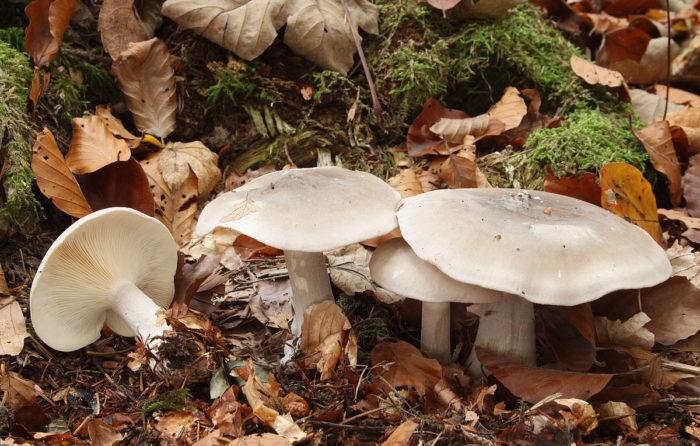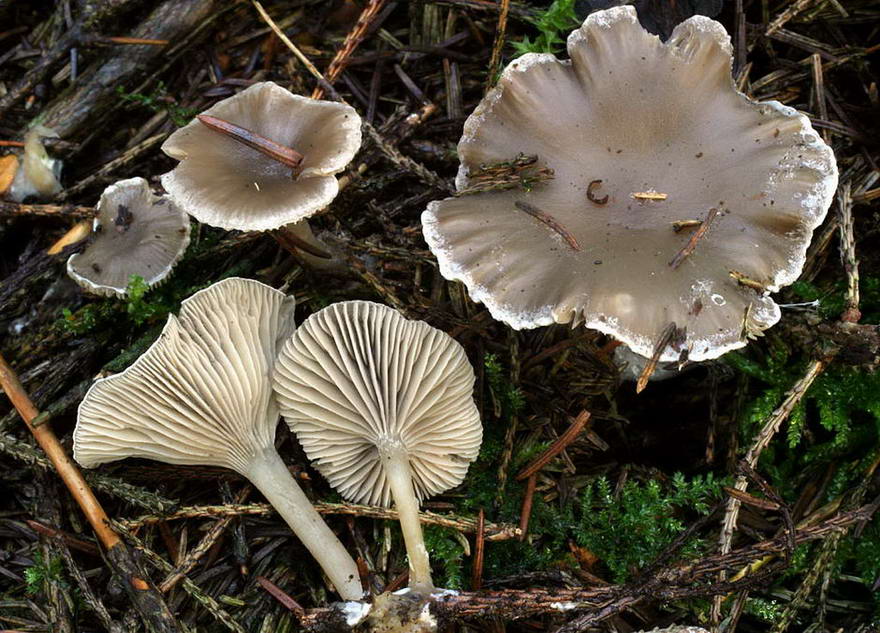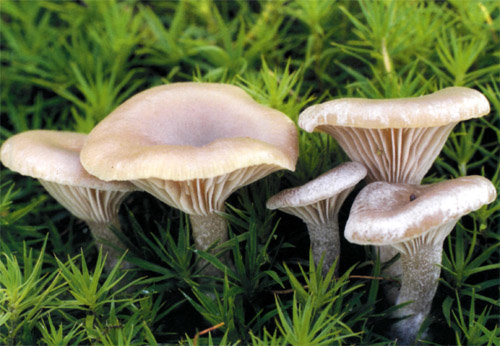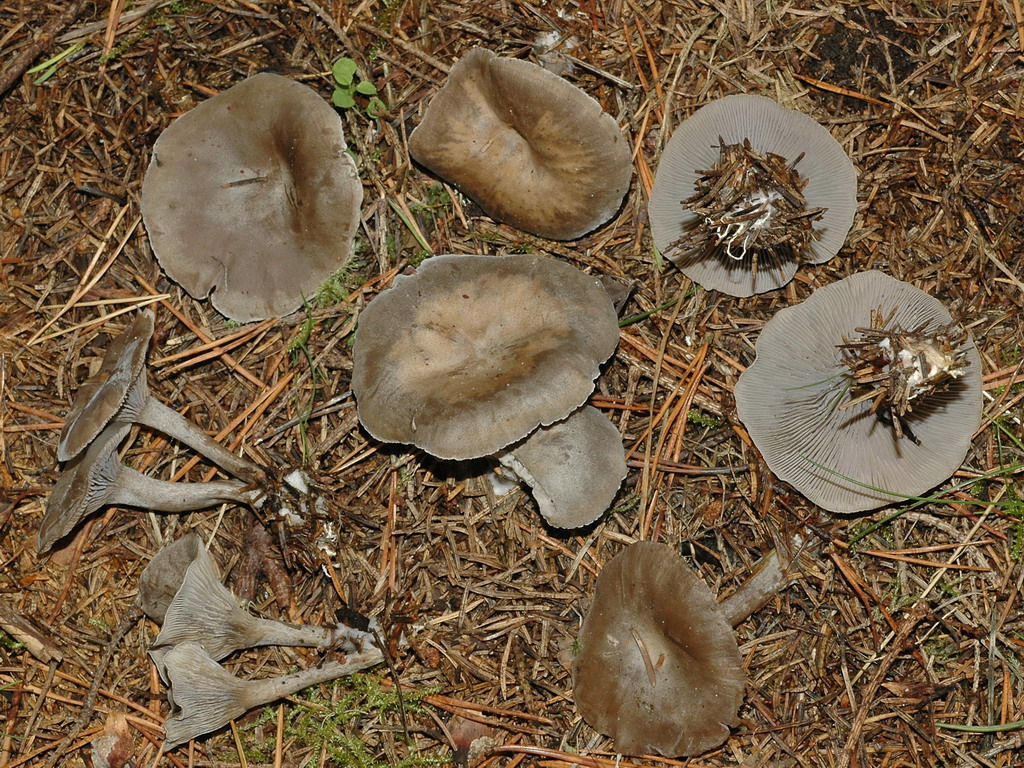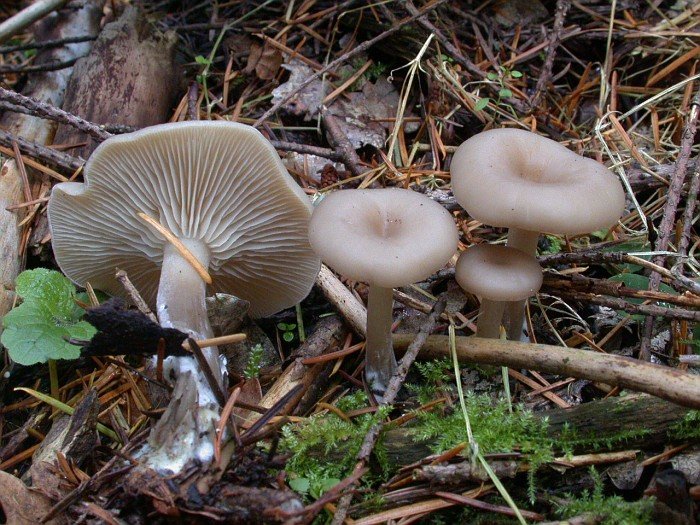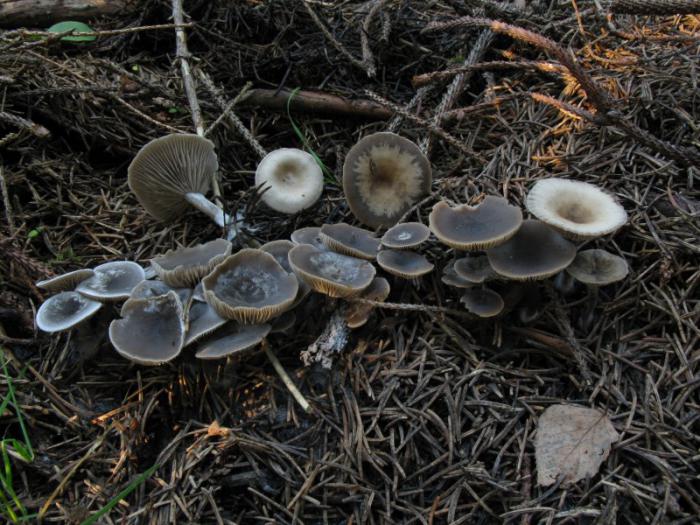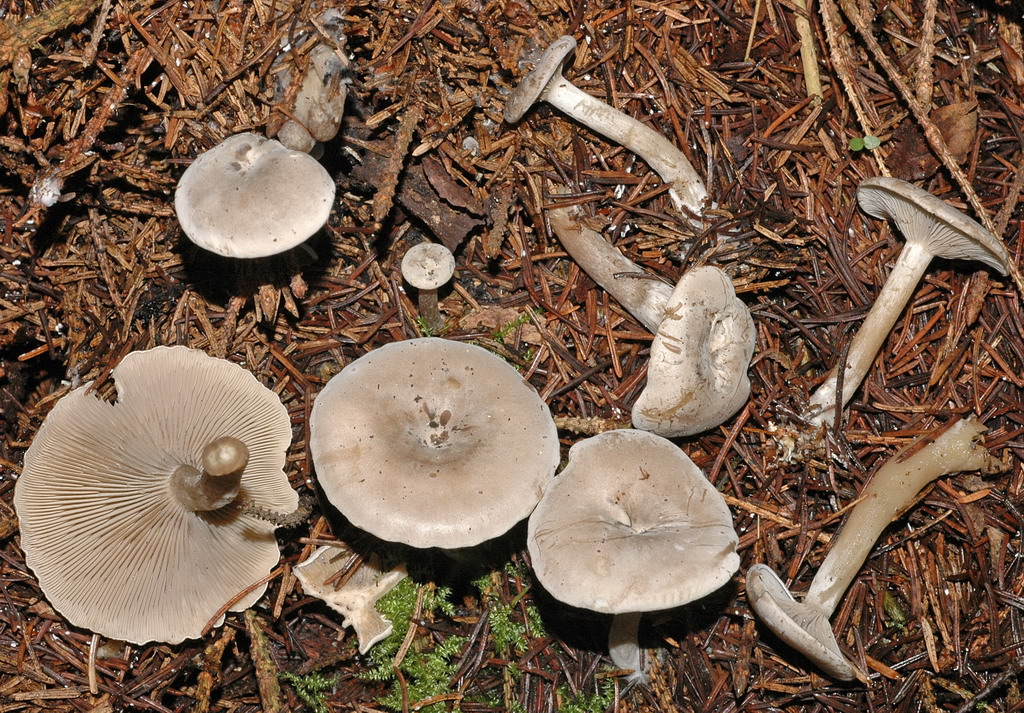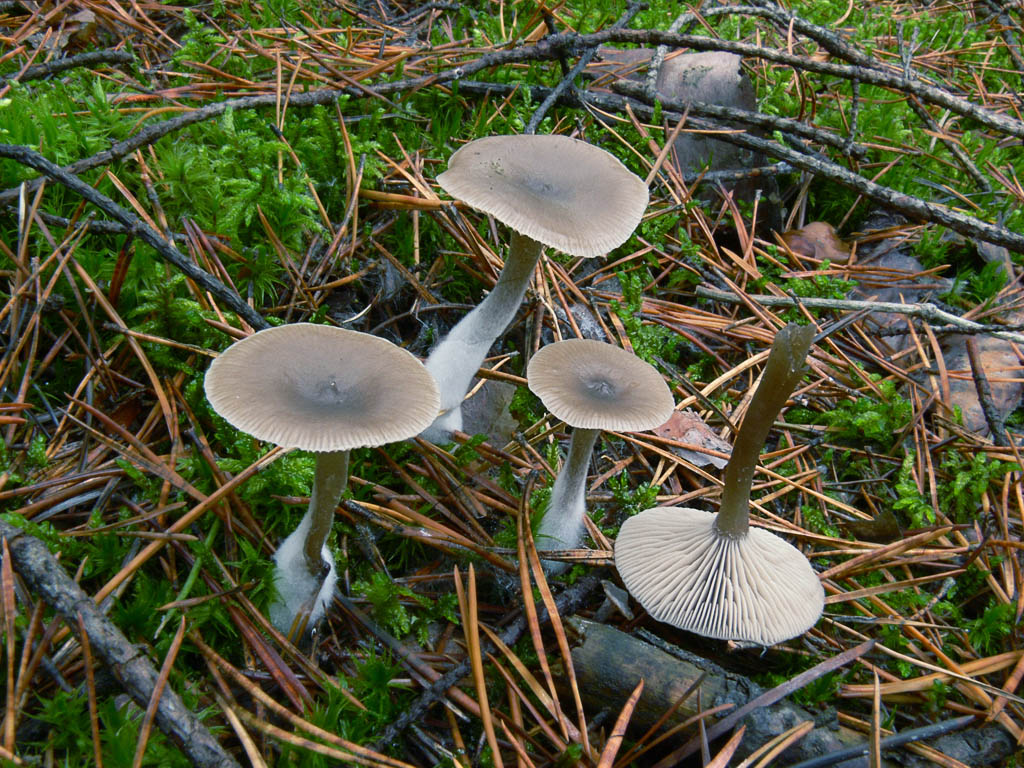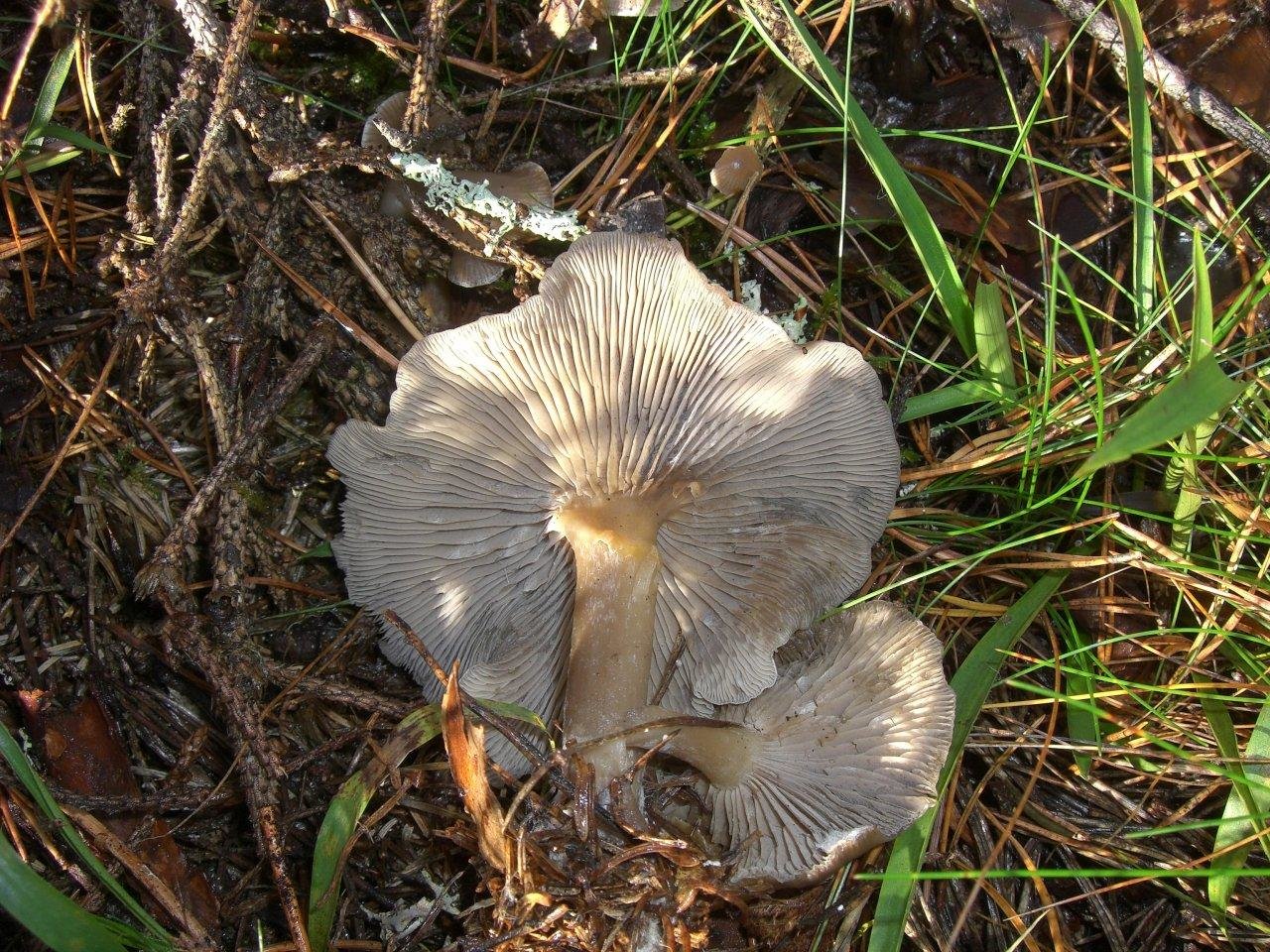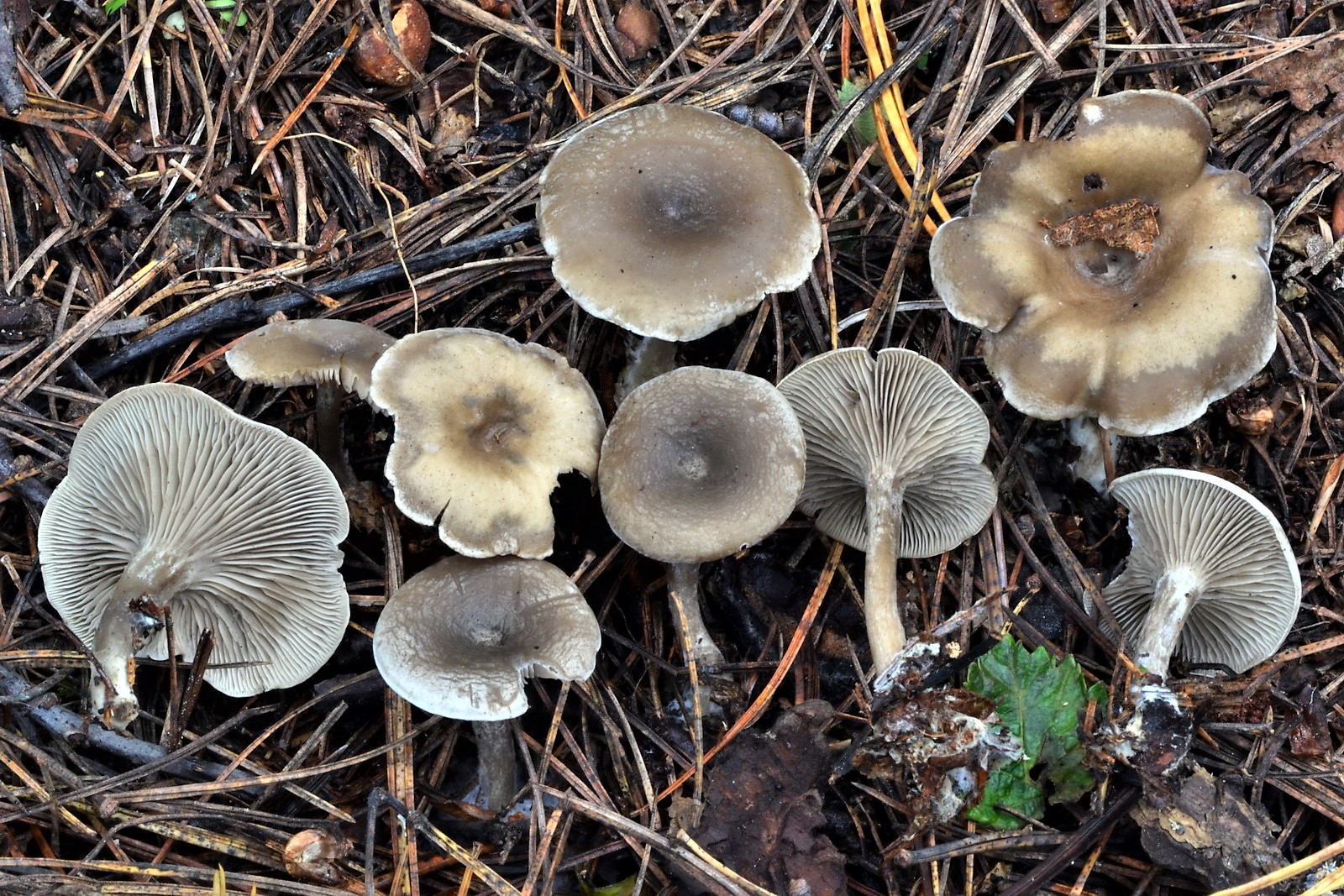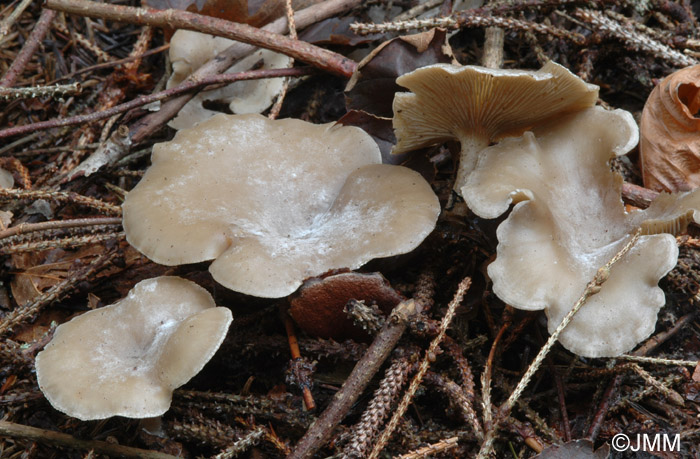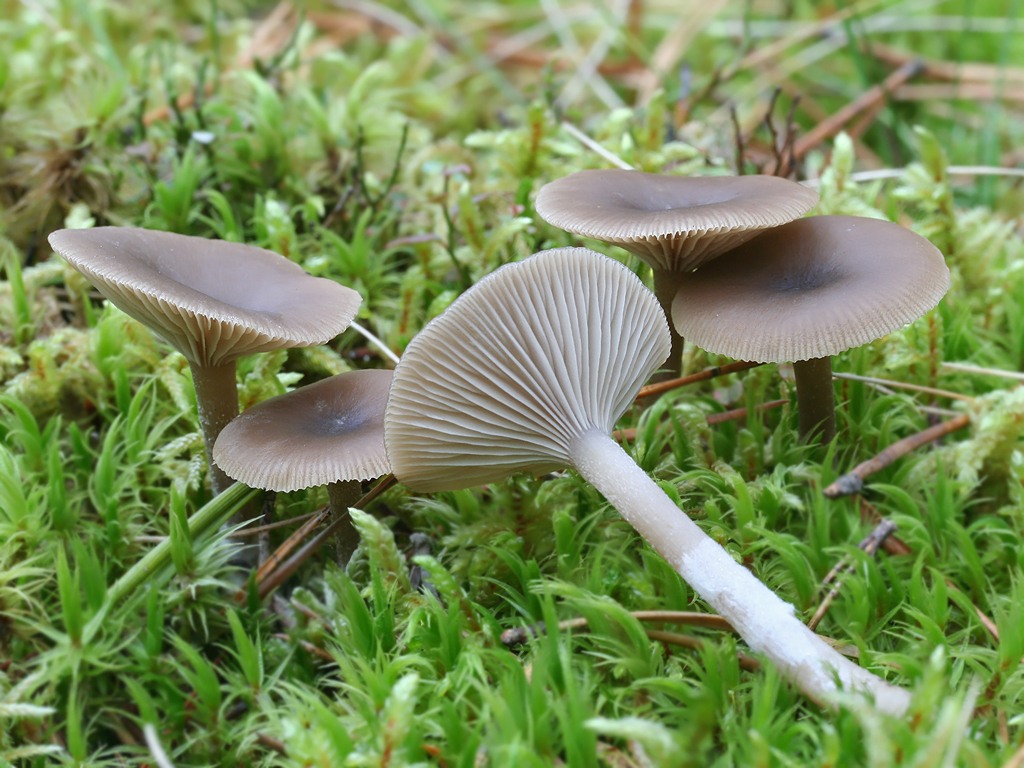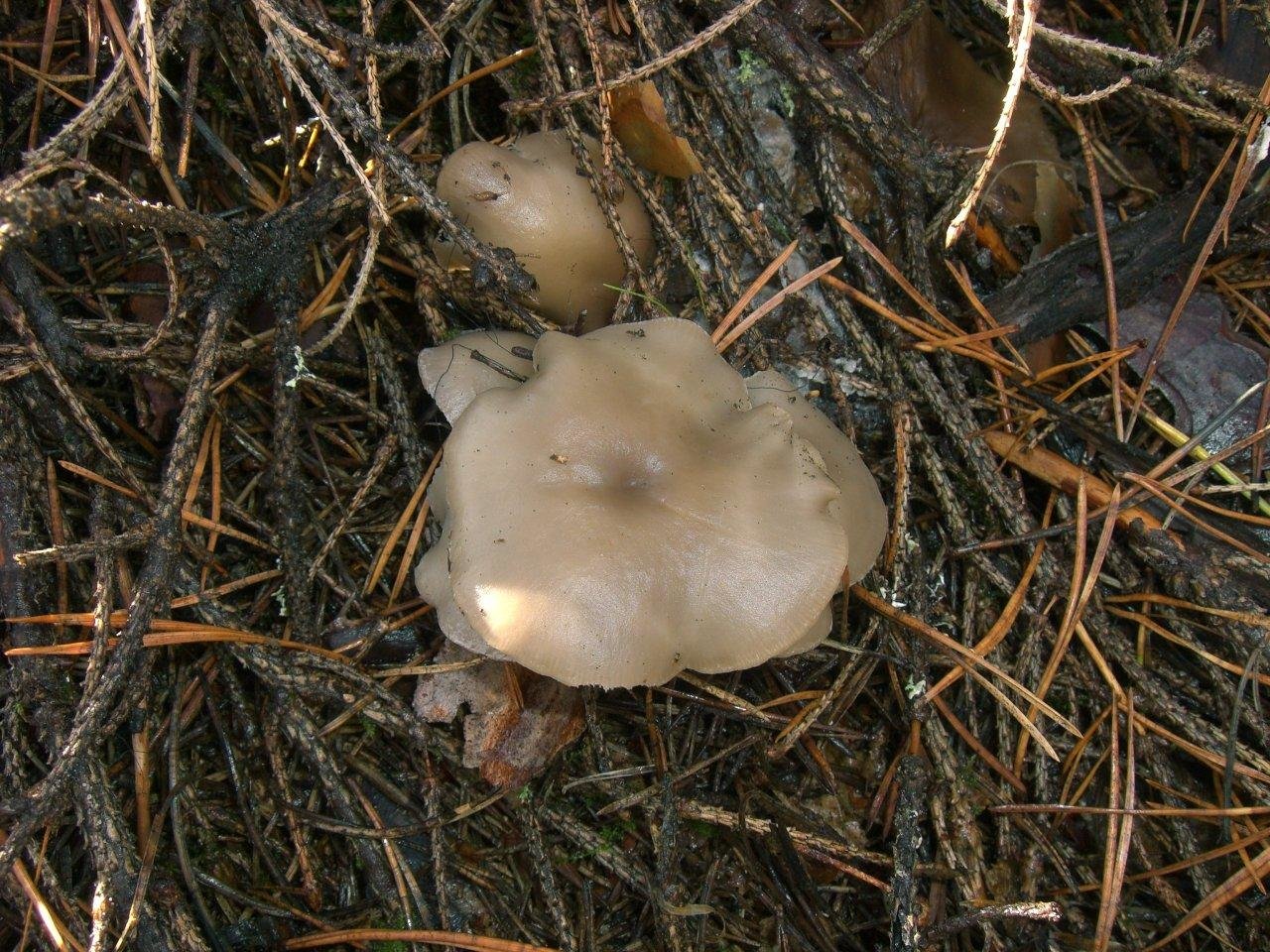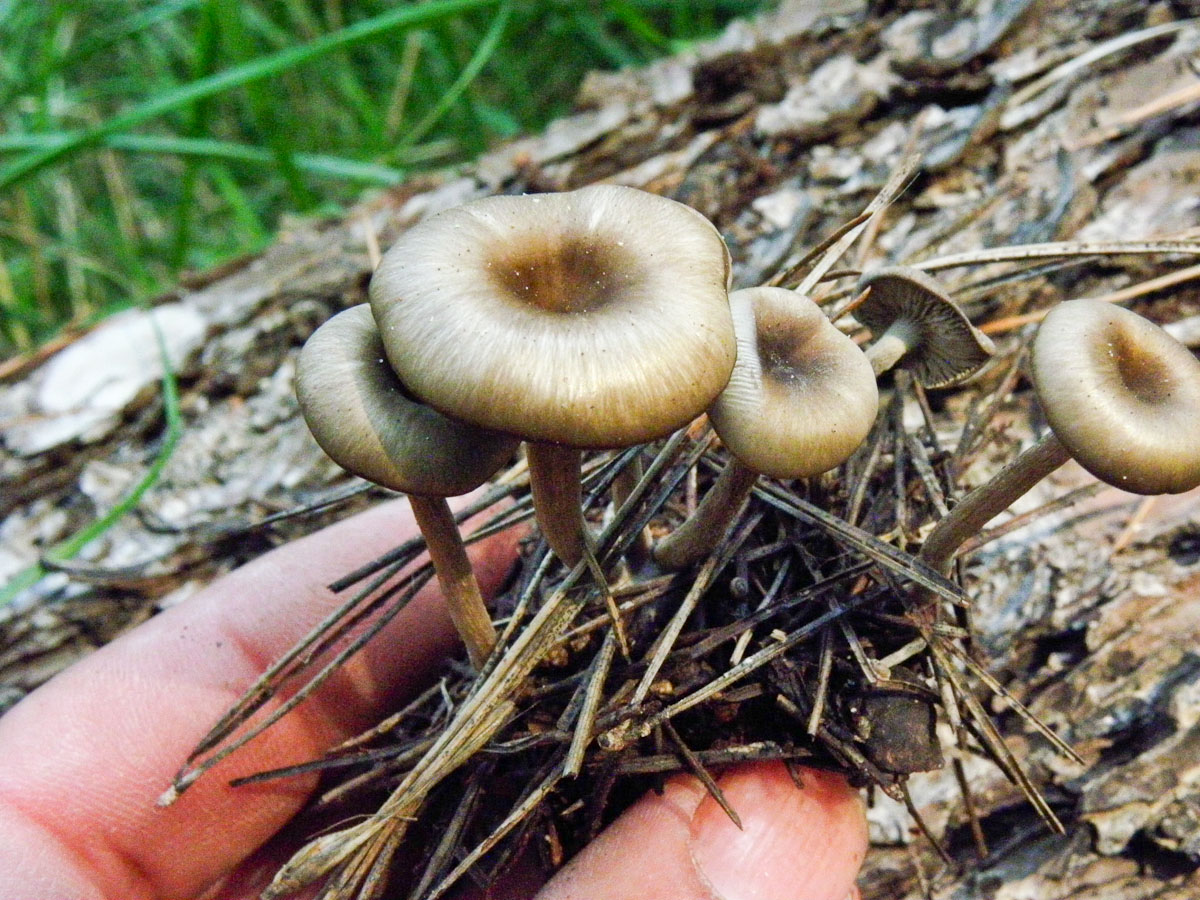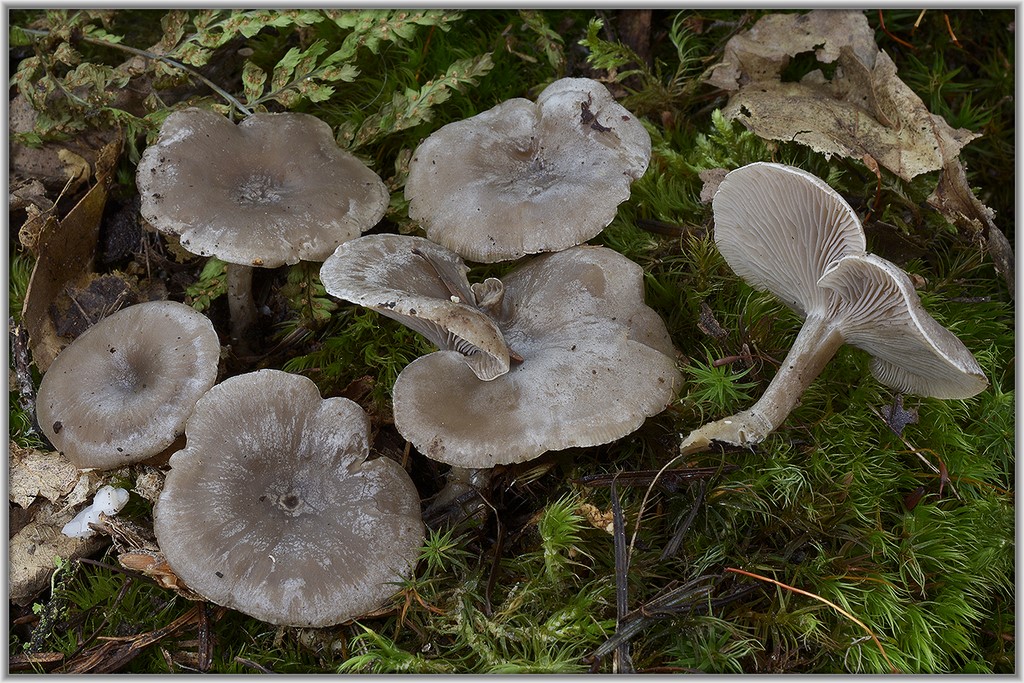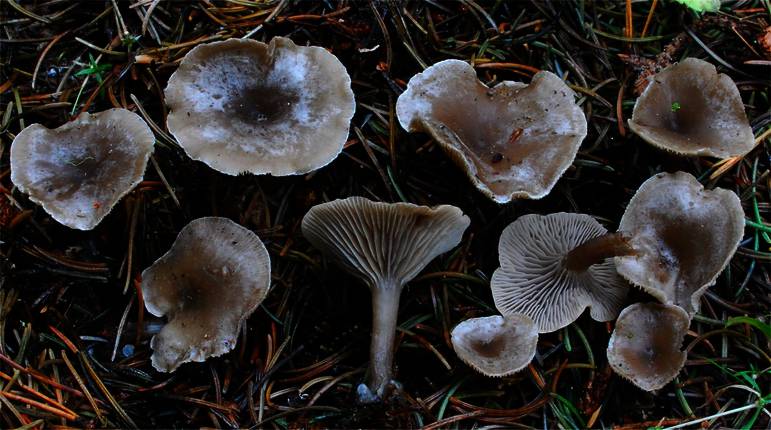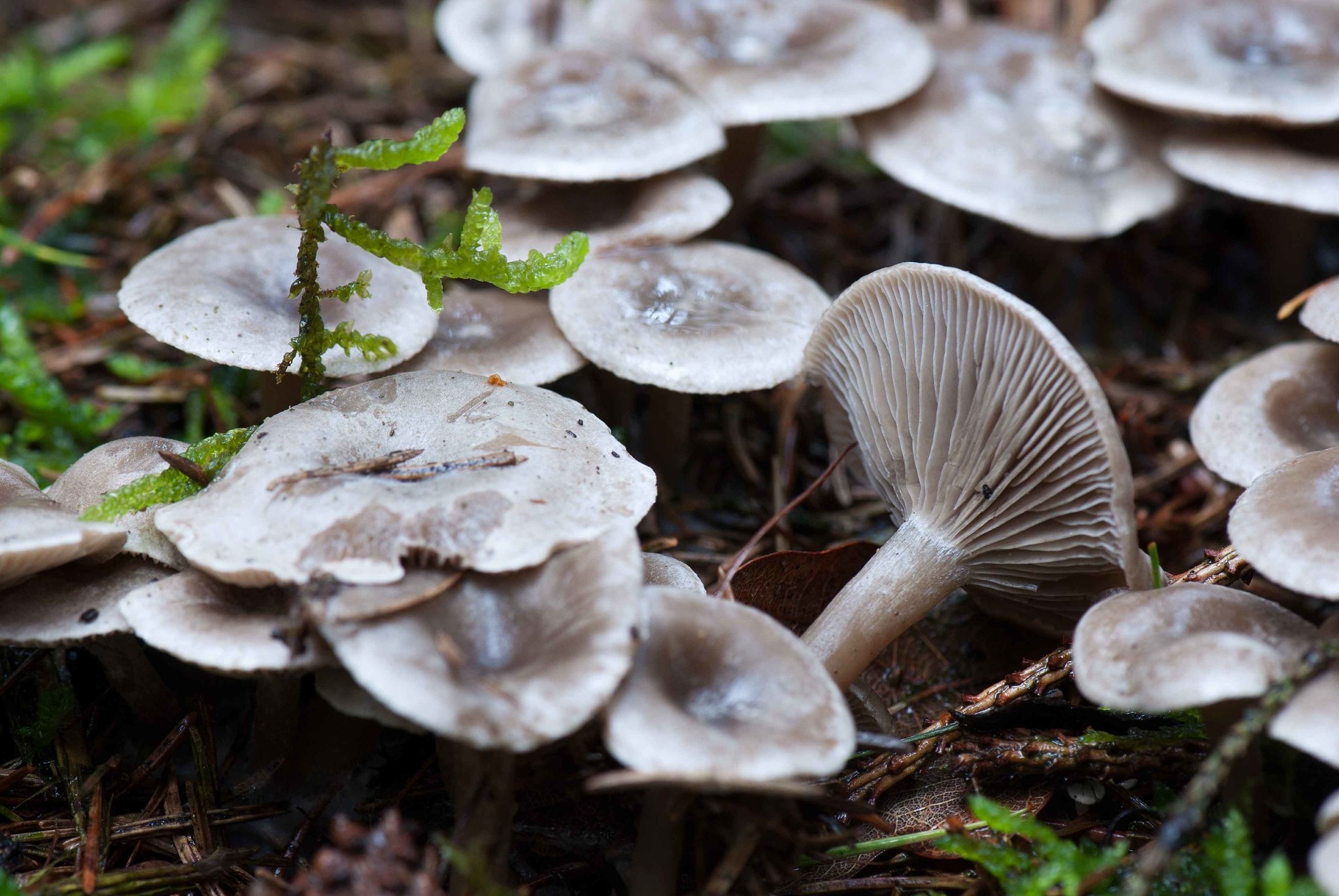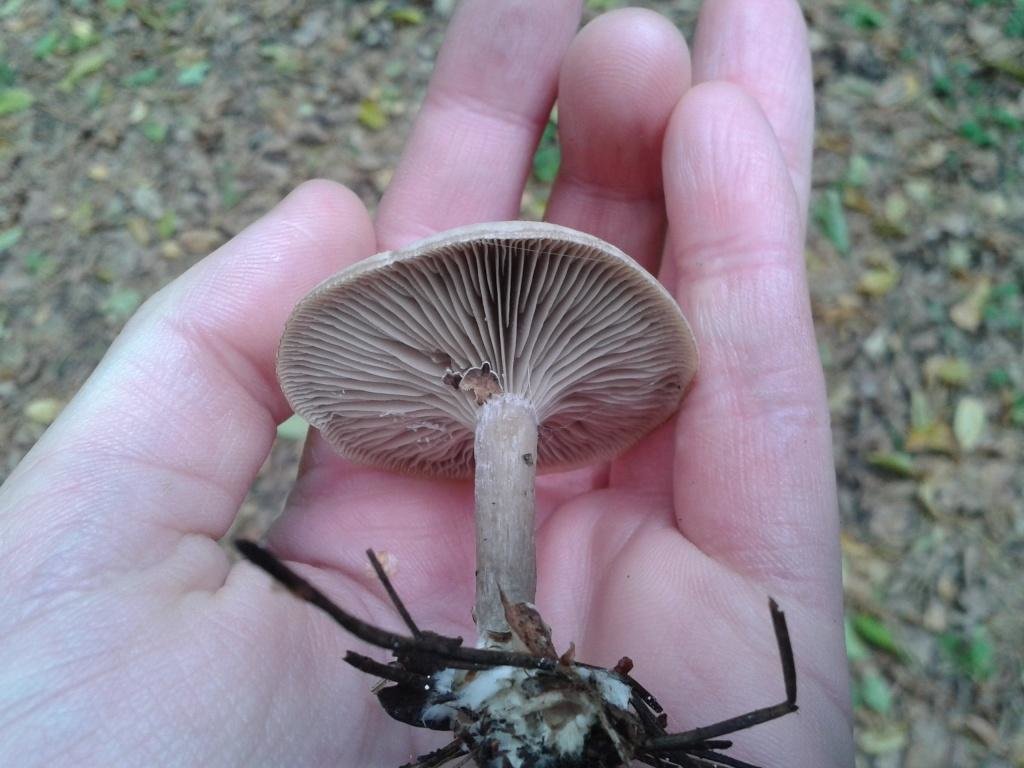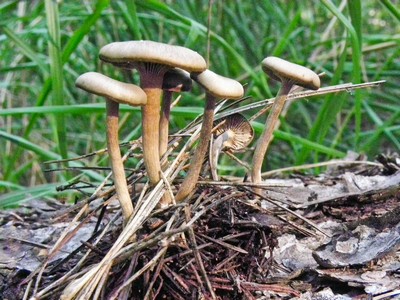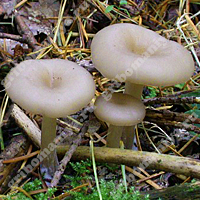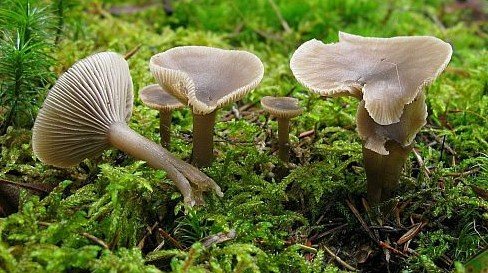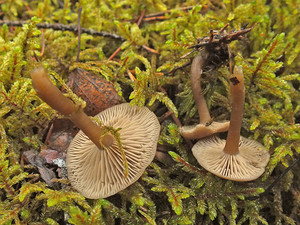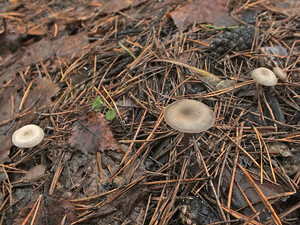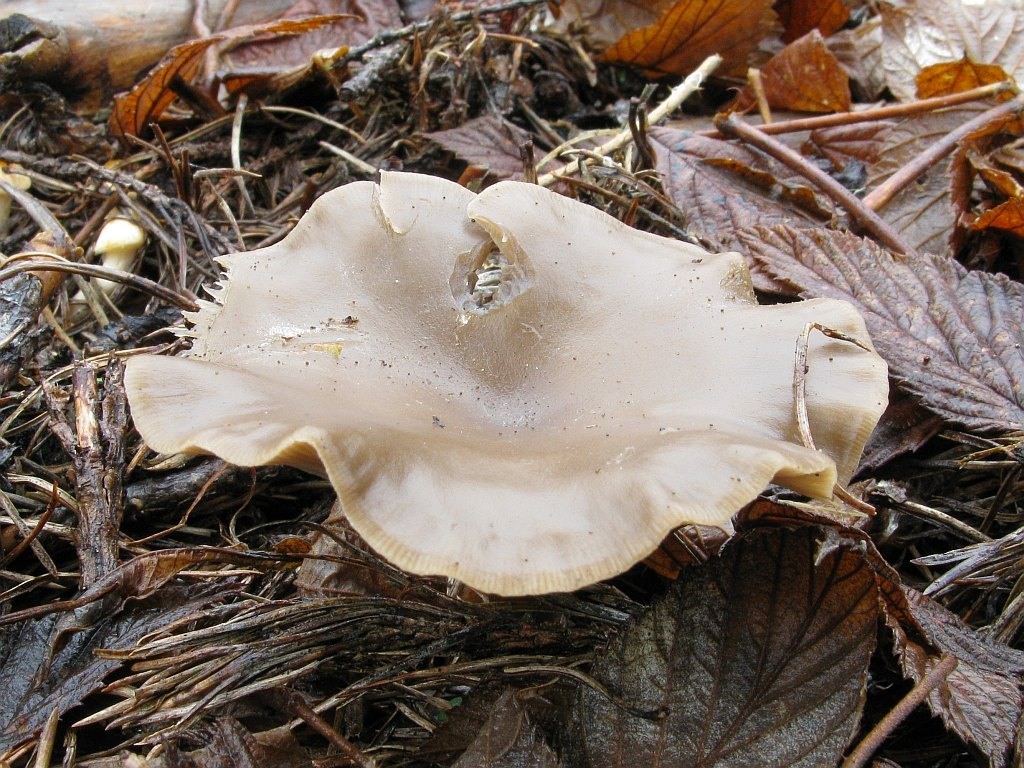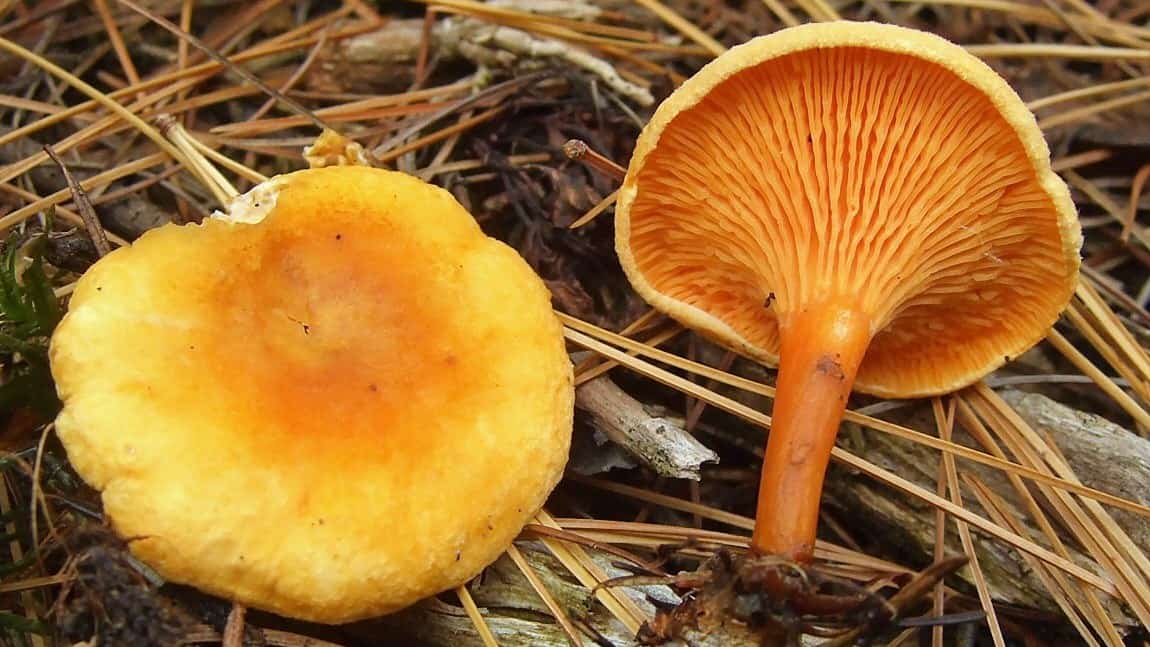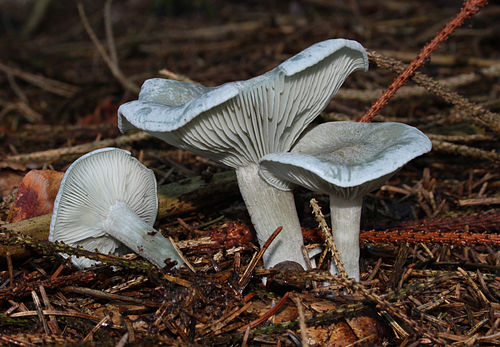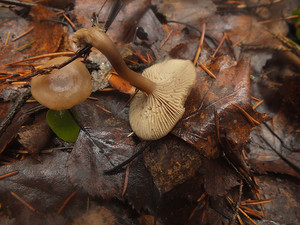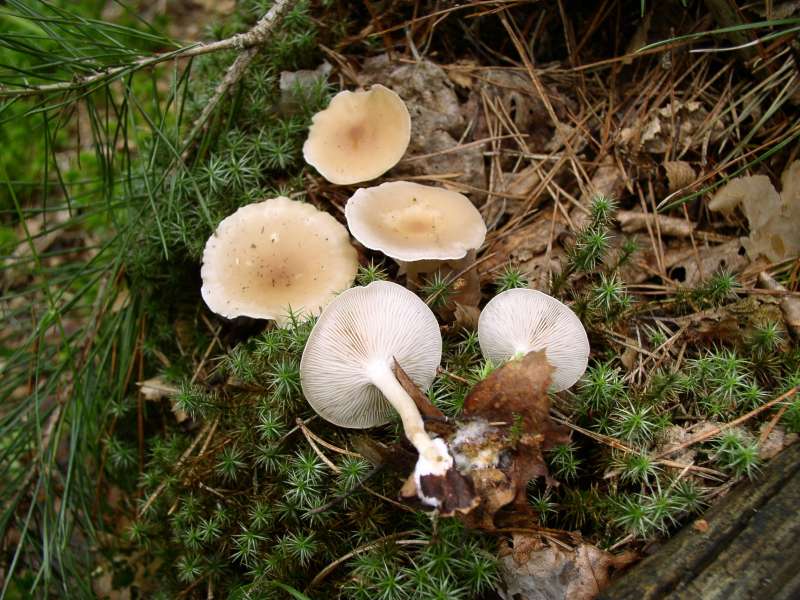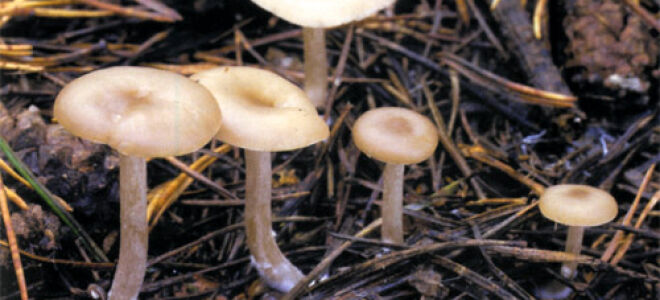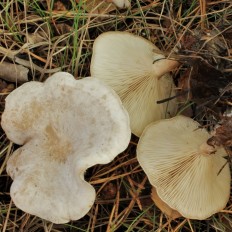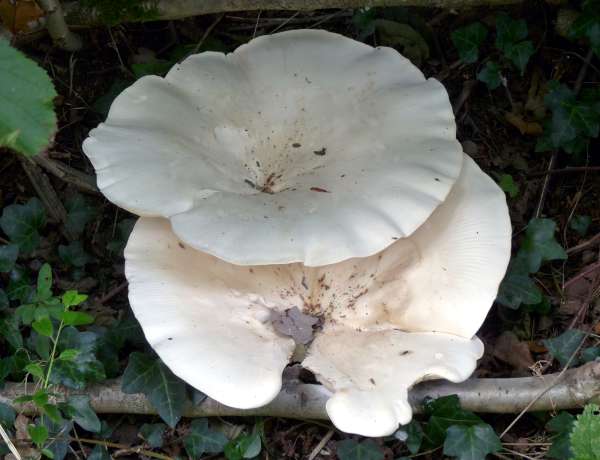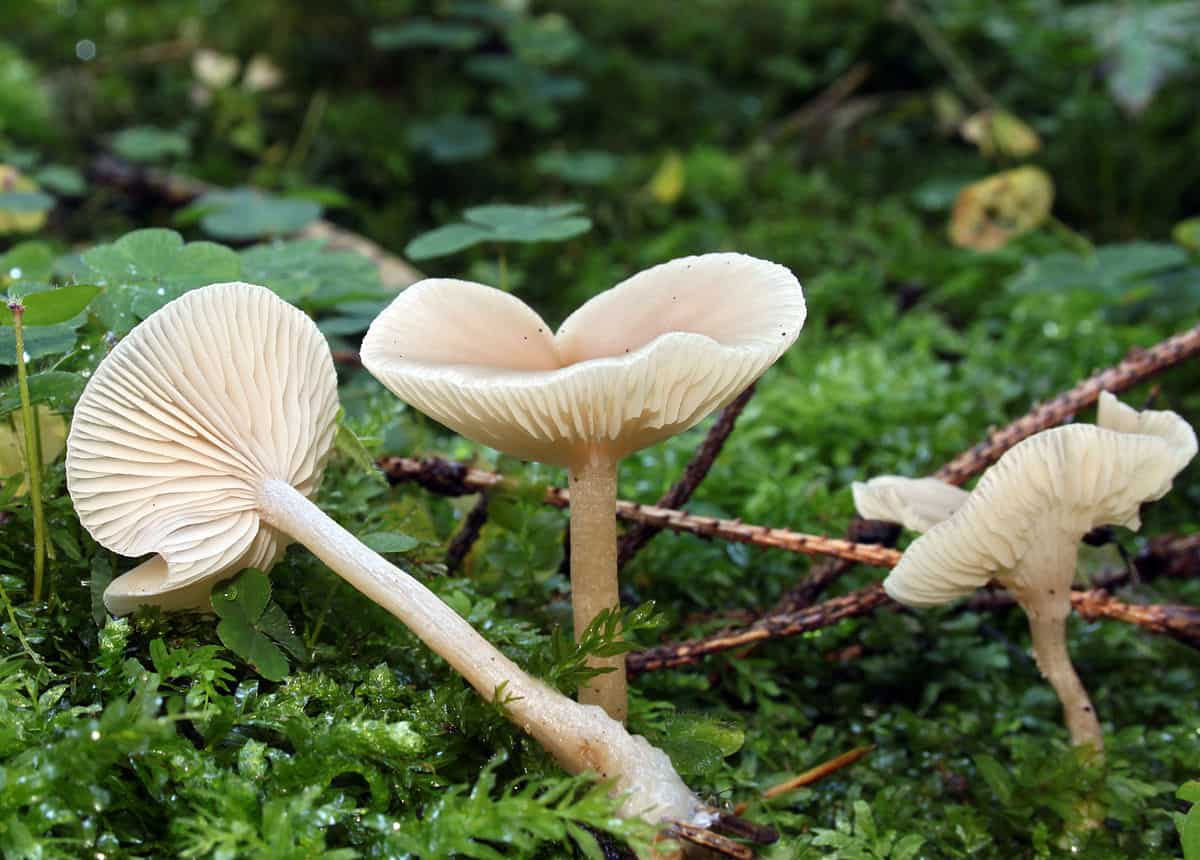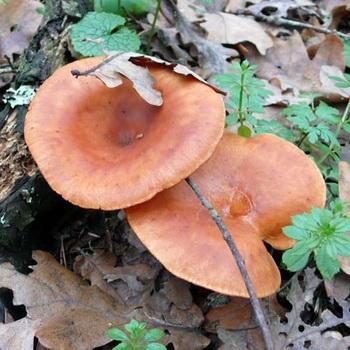Smelling talker: description and photo
| Name: | Low-odor talker |
| Latin name: | Clitocybe ditopa |
| Type of: | Inedible |
| Specifications: |
|
| Systematics: |
|
A weak-smelling talker is a lamellar mushroom. Belongs to the Trichomolov family, the genus Klitocybe or Govorushki. In Latin, Clitocybe ditopa. It is called weakly smelling for its weak mealy taste and smell. In some sources there is information that the mushroom can be eaten. But most experts warn: it is inedible.

Where weak-smelling talkers grow
A weak-smelling talker - an inhabitant of shady mixed, mainly broad-leaved forests, as well as spruce and pine forests. Prefers soils saturated with nitrogen. Occurs in rare, few groups. It is a saprotroph. Grows on a litter of fallen needles and foliage.
The distribution area is the northern latitudes of the planet. In our country, it is most often found on the territory of the Republic of Komi and Karelia, in the northern regions of Siberia.
The species belongs to late mushrooms. This means that ripening occurs in late autumn, from mid-November, and even in the first weeks of winter. The peak of growth falls in the period from December to January.
What weak-smelling talkers look like
The hat is medium in size, about 6 cm in diameter. In young specimens, it has a convex shape. As it develops, it quickly opens up, transforms into a funnel-shaped or flat one. The edge of the cap is first tucked up, gradually becomes smooth and wavy.
Cap color options - brown, beige, grayish brown. It is covered with a white or gray waxy coating. In the center of the cap, the color is always darker than at the edges. When the fruiting body begins to dry out, its color changes to gray-beige. The pulp is loose and often watery, grayish, has a flour taste and smell. In adult specimens, it becomes more rigid.
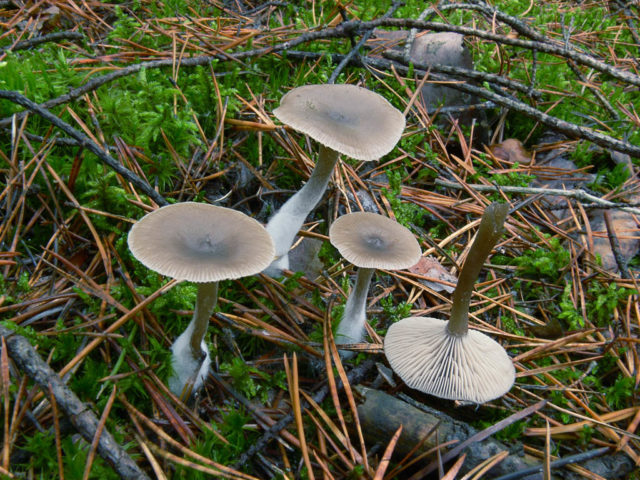
The stem is smooth, thin, hollow, 1 cm in diameter and about 6 cm long. Located in the center. It is flattened or cylindrical in shape. Its color coincides with the color of the cap or is slightly paler. At the base of the peduncle there is a whitish pubescence.
The species belongs to lamellar mushrooms. Its spores are found in frequent thin gray plates. Spores are smooth and colorless. They can be spherical or elliptical in shape.
Is it possible to eat weak-smelling talkers
There is no exact information about whether the weak-smelling talker is suitable for eating, how toxic it can be. It is believed that it is capable of causing human poisoning. And if you eat a large amount, the harm to your health can be very serious.
Lovers of quiet hunting bypass the mushroom also for the reason that it has poisonous counterparts that are dangerous to humans.
How to distinguish weak-smelling talkers
The fungus has an external resemblance to the following representatives of the genus Clitocybe:
- Fragrant talker. Conditionally edible mushroom, characterized by an earlier fruiting period and a more yellow tint of the cap.
- Talker Lange. You cannot eat it. It does not have a white wax coating. The edges of its cap are ribbed rather than smooth or wavy; the spores are larger.
- The talker is pale-colored. Inedible specimen with a dark ash or gray-brown pitted cap.
Conclusion
Weakly smelling talker is a mushroom known to the inhabitants of northern latitudes.Being poorly studied in terms of toxicity and similar to many inedible or conditionally edible species, it is not suitable for consumption, and it does not represent any culinary value. Some mushroom pickers note that the mushroom tastes like validol.
Contraindications to use
Periodic use of veselka helps to rejuvenate the body. This product has proven to be effective in practice as a remedy. For therapy and prevention, the following forms of the fungus are used:
- water tincture as an effective remedy for high cholesterol, stomach diseases;
- dried mushroom material to strengthen immunity;
- fresh mushrooms are the best option for the prevention of cancer;
- universal alcoholic preparations.
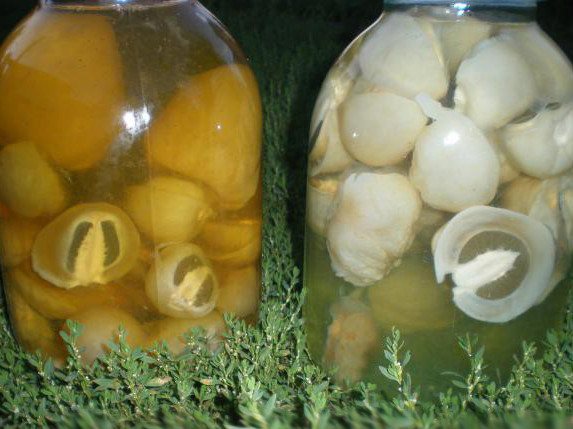
Mushroom tincture Basic recipes:
- For alcoholic tinctures, you will need 250 ml of alcohol and dried mushrooms. This mixture should be infused for two weeks. To strengthen immunity, it is recommended to use this medicine in 1 tbsp. spoon three times a day. For diabetics and people with a problematic thyroid gland, a daily dose equivalent to the volume of 1 teaspoon is sufficient, which must be taken over 3 months. Twice a day before meals, it will be useful to take the drug for people who suffer from heart pathologies.
- For therapeutic purposes, a jelly-like mass of an egg mushroom is also used. With its help, they fight wrinkles, skin allergies. This substance is applied to the skin and washed off after 15 minutes.
In malignant tumors, a tincture prepared on the basis of a fungus is used as an adjuvant in the treatment of oncological diseases. Veselka ordinary helps to increase the activity of cytotoxic lymphocytes, which fight dangerous cancer cells. When using the tincture, the likelihood of side effects after radiation exposure and chemotherapy is reduced.
Veselka ordinary, the tincture of which is taken simultaneously with the main drugs, is especially effective in the treatment of benign tumors. Thanks to individual polysaccharides that are part of the fungus, the production of perforin is enhanced, which destroys the membranes of tumor cells, after which they simply disappear.
Whitish talker (Clitocybe rivulosa)
Synonyms:
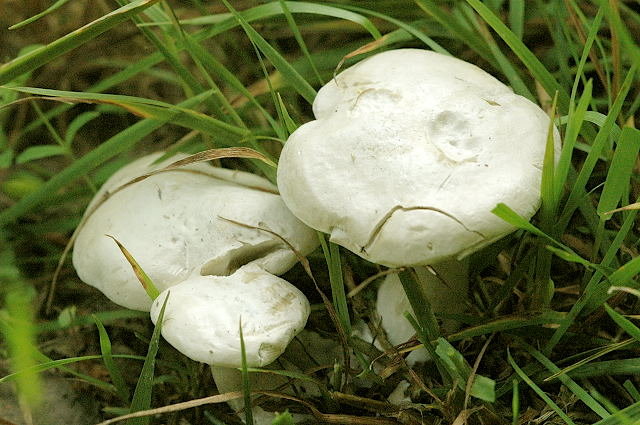
Whitish, bleached, or discolored (Latin Clitocybe dealbata), also reddish, or furrowed (Clitocybe rivulosa) - a type of mushroom included in the Clitocybe genus of the Tricholomataceae family.
Whitish talker grows on soil or on a litter in places with a grass cover - in meadows and pastures or on forest edges, clearings and clearings in deciduous and mixed forests, as well as in parks. Fruit bodies appear in groups, sometimes very large; form "witch circles". Distributed in the temperate zone of the Northern Hemisphere.
The season is from mid-July to November.
The cap of the talker is whitish ∅ 2-6 cm, in young mushrooms it is convex, with a turned-up edge, later it is spread, in old mushrooms it is flat or depressed, often with a wavy edge. The color of the cap varies from powdery white and whitish-grayish in young mushrooms to buffy in mature ones. Mature mushrooms have vague grayish spots on the cap. The surface of the cap is covered with a thin powdery coating, which can be easily removed; in wet weather it is slightly slimy, in dry weather it is silky and shiny; when dry, it cracks and becomes lighter.
The pulp is thin-fleshy (3-4 mm thick on the disc of the cap), elastic and fibrous, whitish, does not change color when cut. The taste is inexpressive; the smell is mealy.
The leg of the talker is whitish, 2-4 cm long and 0.4-0.6 cm ∅, cylindrical, slightly tapering towards the base, straight or curved, solid in young mushrooms, later hollow; the surface is whitish or grayish, in places covered with nut-colored spots, darkening when pressed, longitudinally fibrous.
Plates are frequent, whitish, later grayish-whitish, at maturity acquire a light yellow color, descending to the pedicle, 2 - 5 mm wide.
Spore powder is white. Spores 4–5.5 × 2–3 µm, ellipsoidal, smooth, colorless.
Deadly poisonous mushroom!
The content of muscarine in the whitish govorushka is higher than in the red fly agaric. Muscarine, contained in the fruiting bodies of the whitish talker (as well as in the fruiting bodies of related species, for example, Clitocybe phyllophila), can cause severe poisoning, which manifests itself 15-20 minutes after ingestion, increased secretion of saliva and tears, sweating, in large doses - weakening of the heart rate, a sharp drop in blood pressure, respiratory failure, severe vomiting and diarrhea. Poisoning symptoms usually begin to subside after two hours. Fatalities are rare. The antidote for muscarine poisoning is atropine and other M-anticholinergics.
It grows on soil or litter in places with grass cover - in meadows and pastures or on forest edges, clearings and clearings in deciduous and mixed forests, as well as in parks. Fruit bodies appear in groups, sometimes very large; form "witch circles". Distributed in the temperate zone of the Northern Hemisphere.
The season is from mid-July to November.
In the literature, two species are often distinguished - Clitocybe rivulosa with a pinkish cap and blades and a short stalk and Clitocybe dealbata with a grayish coloration and a longer stalk. These factors turned out to be insufficient for separation, the color of hygrophonic talkers depends significantly on the degree of wetting. Molecular genetic studies have also come to the conclusion about one polymorphic species.
The medicinal properties of the Veselka mushroom:
It also grows in Western Europe, and since the interest in medicinal mushrooms is now incredibly high abroad (fungotherapy - the science of medicinal mushrooms - is considered the era of new discoveries), the veselka has also found its way onto the laboratory table. And it became a sensation!
Currently, it is the only mushroom in the world that has shown a truly colossal antitumor activity - already on the 10th day, its substances stop the growth and reproduction of cancer cells!
It turned out that her ability to remove cholesterol and lower blood pressure is 2 times higher than that of shiitake! But that's not all. Veselka mushroom phytoncides also turned out to be more active - they kill the viruses of herpes, flu, hepatitis and even AIDS.
It treats this fungus and malignant tumors (and any), resolves benign, lowers blood pressure, treats gastrointestinal ulcers, heals the kidneys. External vodka tincture of the fungus heals trophic ulcers, bedsores, bites, wounds, skin cancer.
Veselka ordinary is a universal mushroom medicine that is used for almost any disease (it has no contraindications):
The mushroom is used in the following cases and has the following actions:
- activation of the antitumor immune function of the body;
- causes the production of perforin by the human body, which prevents cancer cells from dividing and forming into a tumor;
- resorption of malignant (sarcoma, melanoma, leukemia and other oncological diseases) and benign tumors (polyps, cysts, pituitary adenomas, prostate adenomas, etc.);
- removes cholesterol, lowers blood pressure, prevents the development of atherosclerosis;
- heals ulcers of the gastrointestinal tract, is used for hemorrhoids, fistulas and fissures in the rectal mucosa;
- destroys viruses of herpes, flu, hepatitis, cytomegalovirus;
- destroying hidden infections, increases potency, fights infertility;
- relieves inflammation of the gastrointestinal tract, kidneys, liver, inflammation and joint pain (gout);
- the mushroom is effective for thrombophlebitis, paralysis, enlargement of the thyroid gland;
- when applied externally, it relieves trophic ulcers, bedsores, joint pains, skin tumors, psoriasis and eczema, heals bites, is an antipruritic, analgesic agent.
- useful for enhancing potency, that is, it is a strong aphrodisiac.
Used water and alcoholic tinctures from fresh or dried fruit bodies of the veselka. According to the available data, such drugs do not conflict with any other dosage forms and drugs.
According to the healer's experience, the most curative is the juice of the veselka, and this juice can be obtained at any stage of ripening. Various diseases can be treated depending on the stage of development of the fungus. The most healing is the juice obtained from the mushroom, which is in the stage of a jelly-like egg. This juice is used to cure benign tumors and hypertension.
For gout, various joint diseases and skin diseases, the juice of an already mature fungus with spores is more suitable, probably the brown-green mucus, which is formed to attract flies, has some specific way of acting on the affected skin and inflamed joints. By the way, Russian healers and herbalists treat eczema with this disgusting-smelling mucus.
It is recommended to use preparations from these mushrooms for prophylactic purposes for men after 25 years of age and older, as well as for people who have undergone any operations, and those who have been diagnosed with vegetative-vascular dystonia.
Maturation stages
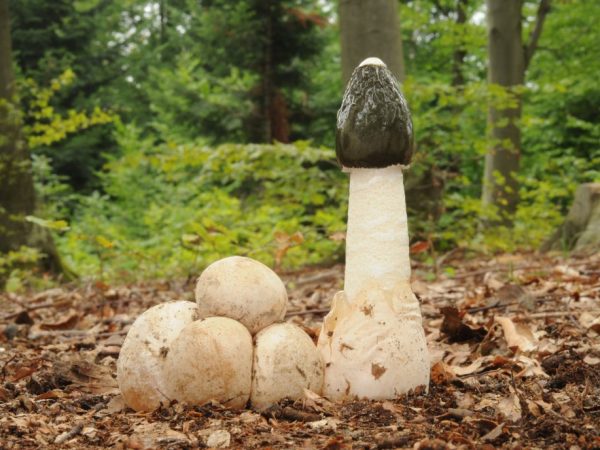
Ripe mushroom smells like rot
The stages of mushroom maturation have a number of characteristics:
- according to the description, at the initial stage, the fruiting body has an ovoid shape, up to 5-6 cm in diameter, a white mycelial cord is visible at the base. The structure of the peridium is leathery. The unripe pulp resembles a yellowish-gray jelly. The smell is rare;
- in the process of maturation, the smooth shell breaks into 2-3 parts (blades) and remains around the base of the receptacle in the form of a volva;
- the mature fruiting body is formed by a leg-like hollow cylindrical receptacle with walls having a spongy-cavernous structure. At its end there is a bell-shaped hat, up to 5 cm in height, with a cellular top layer, covered with a dark olive gleba. Above there is a dense disc formation with a hole. The smell of ripe morels is unpleasant, reminiscent of rot.
The rate of development of an ordinary jellyfish is considered one of the highest and reaches 5 mm in 60 seconds.
Orange talker (Hygrophoropsis aurantiaca)
- Other names for the mushroom:
- False fox
- Kokoschka
Synonyms:
- Gigroforopsis orange
- Kokoschka
- Agaricus aurantiacus
- Merulius aurantiacus
- Cantharellus aurantiacus
- Clitocybe aurantiaca
- Agaricus alectorolophoides
- Agaricus subcantharellus
- Cantharellus brachypodus
- Cantharellus ravenelii
- Merulius brachypodes
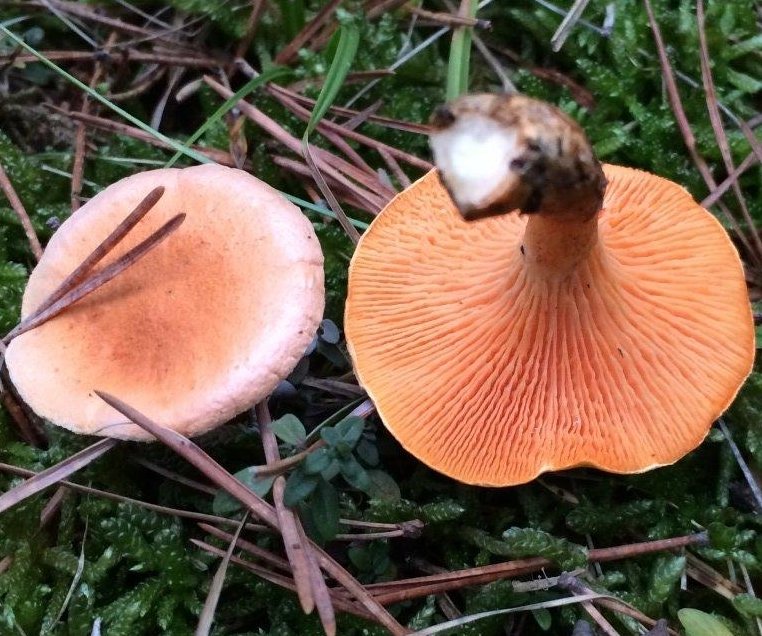
Description
Hat: 2-5 centimeters in diameter, under good conditions - up to 10 centimeters, first convex, with a bent or strongly bent edge, then flat-spread, depressed, funnel-shaped with age, with a bent thin edge, often wavy. The surface is finely velvety, dry, velvety disappears with age. The skin of the cap is orange, yellow-orange, orange-brown, the darkest in the center, sometimes visible in weak concentric zones that disappear with age. The edge is light, pale yellowish, fades to almost white.
Plates: frequent, thick, without plates, but with numerous ramifications. Strongly descending. Yellow-orange, brighter than caps, turn brown when pressed.
Leg: 3-6 centimeters long and up to 1 cm in diameter, cylindrical or slightly narrowed towards the base, yellow-orange, brighter than the cap, the same color with the plates, sometimes brownish at the base. Can be curved at the base. In young mushrooms, it is whole, with age it is hollow.
Flesh: thick in the center of the cap, thin to the edges. Dense, somewhat cotton-like with age, yellow, yellowish, pale orange. The peduncle is dense, tough, reddish.

Odor: Faint Taste: Described as slightly unpleasant, subtle.
Spore powder: white Spores: 5-7.5 x 3-4.5 microns, elliptical, smooth.
Season and distribution
The false chanterelle lives from early August to late October (massively from mid-August to the last decade of September) in coniferous and mixed forests, on soil, litter, in moss, on rotting pine wood and around it, sometimes near anthills,singly and in large groups, quite often, annually.
Distributed throughout the temperate forest zone of Europe and Asia.
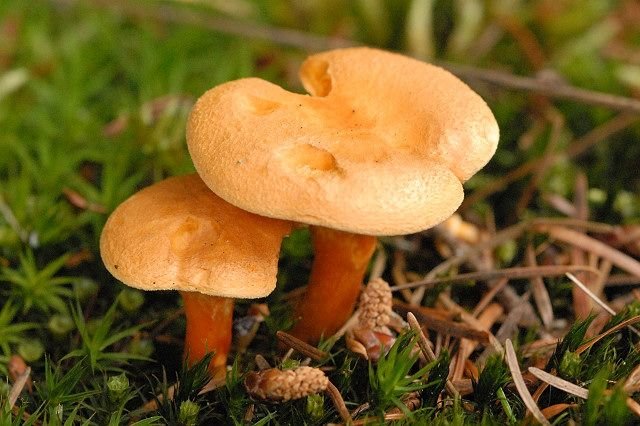
Similar species
Common chanterelle (Cantharellus cibarius)
with which Govorushka orange intersects in terms of fruiting time and habitat. Easily distinguished by a thin, dense (in a real chanterelle - fleshy and brittle) consistency, a brighter orange color of the plates and legs.
Red chanterelle (Hygrophoropsis rufa)
differs in the presence of pronounced scales on the cap and a more brown central part of the cap.
Edibility
Orange talker has long been considered a poisonous mushroom. Then it was transferred to the category of "conditionally edible". Now many mycologists tend to consider it rather mildly poisonous than edible, even after preliminary boiling for at least 15 minutes. Until doctors and mycologists have come to a consensus on this score, we recommend refraining from eating this mushroom for people with hypersensitivity to mushrooms: there is information that the use of a false chanterelle can cause an exacerbation of gastroenteritis.
And the taste of this mushroom is significantly inferior to the real chanterelle: the legs are hard, and the old caps are completely tasteless, cotton-rubbery. Sometimes they have an unpleasant aftertaste from pine wood.
Video about the orange Govorushka mushroom:
The article uses photographs from questions in recognition: Valdis, Sergey, Francisco, Sergey, Andrey.
How to use:
For internal use (for gastritis of various forms, for stomach ulcers, kidney problems, for gout, polyarthritis, paralysis and cancer):
When preparing for internal use, the "eggs" of the mushroom are wiped with a dry cloth (it is undesirable to wash), cut and poured with vodka (moonshine).
Tincture recipe 1:
5 g of powder or 50 g of fresh veselka eggs are poured with 200 ml of vodka, infused for 2 weeks in the refrigerator. No filtering required. The longer the infusion period, the higher the medicinal effect. Take from 1 teaspoon to 3 tbsp. spoons depending on the disease. For example, to lower the pressure in hypertension, 1 teaspoon of tincture is enough 2 times a day. In case of neoplastic diseases, 1 tbsp should be taken. spoon 2-3 times a day. For other diseases (for example, prostate disease) - 1 teaspoon 2-3 times a day.
The prophylactic course of treatment is 30 days (carried out 2 times a year), the therapeutic course is 3-4 months.
Tincture, recipe 2:
With gastritis of various forms, with stomach ulcers, when the kidneys hurt, with gout, polyarthritis, paralysis and cancer.
5 g of powder or 50 g of fresh veselka eggs are poured with 200 ml of vodka (up to 38% strength). Insist for 30 days in a dark, damp place, preferably in the refrigerator (the jar must be rolled up with a lid). The infusion is taken 3 times a day for 1 tbsp. spoon 20 minutes before meals, for a month. Then take a break for 1-2 weeks and again carry out the course of treatment.
Tincture, recipe 3:
Special recipe for cancer treatment
Finely chop 6–7 fresh mushrooms (100 g). Pour a jar of mushrooms (1 l) to the top with 50% moonshine (not alcohol), close the lid tightly and put in a dark place for 14–21 days. Shake the tincture every day.
Treatment: the full course requires 3-4 liters of tincture, take 20 minutes before meals, 1 tbsp. spoon 3 times a day. Drink with raw fresh egg or 1 teaspoon of honey.
In parallel, it is necessary to prepare and drink an infusion of chaga, in any form. "Chagovaya" tincture should be drunk 2 times a day for 1 dec. spoon or 1 teaspoon in the morning and evening. 1 course of treatment corresponds to 1 liter of veselka infusion and 300 ml of chaga infusion. After the course, a 10-day break is taken, and the treatment is resumed. At the same time, you can undergo a course of chemotherapy, if it is prescribed by oncologists.
Tincture recipe 4:
Pour 5 g of veselka powder with linseed or olive oil (150 ml) heated in a water bath. Mix. Keep in a warm place for 3 hours (for example, near a battery). Then refrigerate for 5 days for infusion. Do not strain the infusion. Take, depending on the severity of the disease, 1 teaspoon or 1 tbsp. spoon 2-3 times a day.
Tincture recipe 5:
5 g of veselka powder pour 200 ml of warm boiled water. Insist 8 hours. Stir before use. Drink 1/3 cup 3 times a day 20 minutes before meals.


